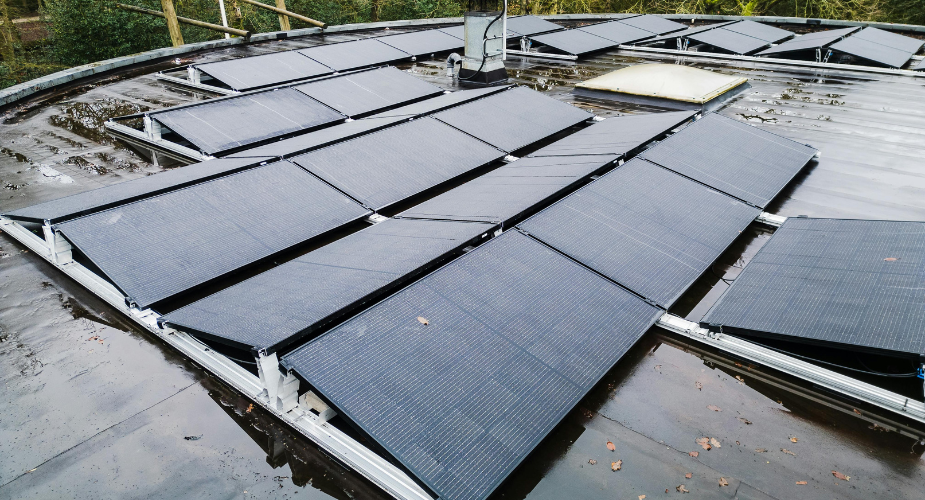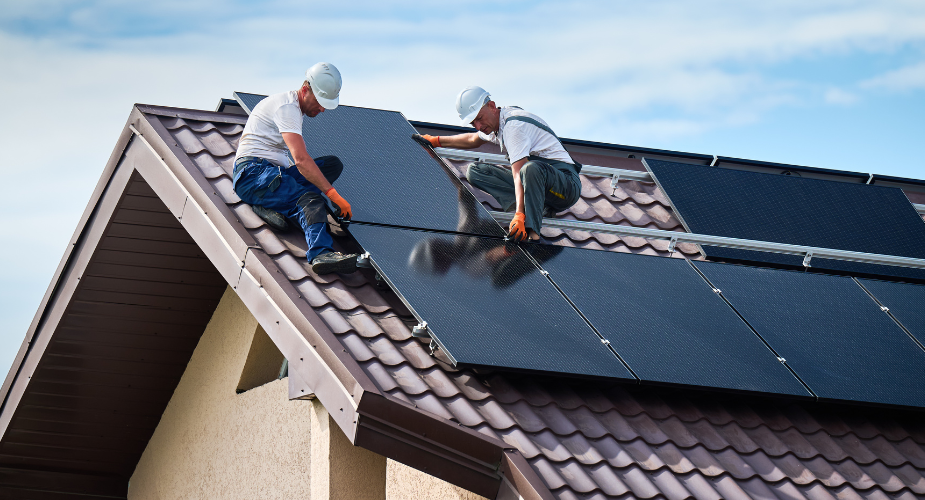As the shift toward renewable energy grows, solar power systems have become a go-to solution for clean, sustainable electricity. But while solar panels often steal the spotlight, another component is just as essential—the inverter. Often referred to as the "brain" of a solar setup, it plays a critical role in making solar energy usable in your home or business. In this article, we'll break down what a solar inverter is, how it works, and why it's a must-have in any solar energy system.
Inverter Essentials: What It Is, How It Works, and Why You Need One
- What Is a Solar Inverter?
- How Does a Solar Inverter Work?
- Types of Solar Inverters
- Benefits of Using a Solar Inverter
What Is a Solar Inverter?
A solar inverter is a key device in any solar power system that converts the direct current (DC) electricity generated by your solar panels into alternating current (AC) electricity, which is what your appliances, outlets, and the electrical grid use.
Without a solar inverter, your solar panels would produce electricity you couldn't use. Simply put, the inverter makes solar energy practical and compatible with the electrical systems in your home or workplace.
How Does a Solar Inverter Work?
Let's walk through the steps a solar inverter follows to make your solar system function:
1. Receives DC Power from Solar Panels
Solar panels capture sunlight and convert it into direct current (DC) electricity. This raw electricity can't be used by standard home appliances.
2. Converts DC to AC Power
The inverter generator processes this electricity using internal switching components and circuits, transforming the one-directional DC current into a multi-directional alternating current (AC). This is essential because the electrical grid and most devices operate on AC power.
3. Synchronizes with the Grid (for Grid-Tied Systems)
In grid-tied systems, the inverter also synchronizes the frequency and voltage of the electricity it produces with the local power grid, ensuring that any excess energy can be safely exported.
4. Optimizes Performance
Modern solar inverters often include Maximum Power Point Tracking (MPPT), which constantly adjusts the electrical load to maximize the energy production from your solar panels, even under changing sunlight conditions.
5. Provides System Monitoring
Most inverters today offer real-time data on energy production, consumption, and system performance through digital displays or mobile apps. This lets you track your energy use and detect issues quickly.
Types of Solar Inverters
Choosing the right type of solar inverter depends on your system size, location, shading conditions, and energy goals. Here's an in-depth look at the four main types of solar inverters:
1. String
What it is:
A string inverter connects a group or "string" of solar panels to a single centralized inverter. It's the most commonly used type in residential and small commercial solar systems.
How it works:
All panels in a string are wired together, and the combined DC power is sent to one inverter for conversion to AC.
Pros:
- Cost-effective: Usually less expensive than others.
- Simple maintenance: Only one central inverter to install and maintain.
- Proven technology: Widely used and reliable.
Cons:
- Performance tied to the weakest panel: If one panel in the string is shaded or underperforming, it lowers the efficiency of the entire string.
- Limited flexibility: Not ideal for roofs with multiple angles or frequent partial shading.
Best for:
Homes with uniform panel placement and minimal shading.
2. Microinverter
What it is:
Microinverters are small, an individual solar inverter is installed on the back of each solar panel. Instead of one centralized inverter, each panel has its own.
How it works:
Each panel converts its DC power to AC independently. The system then feeds usable AC electricity directly to your home or the grid.
Pros:
- Panel-level optimization: One shaded or dirty panel won't affect the performance of the others.
- Flexible system design: Ideal for roofs with complex layouts or multiple orientations.
- Advanced monitoring: You can track the performance of each individual panel.
- Scalable: Easy to expand your solar system later by simply adding more microinverters and panels.
Cons:
- Higher cost: More expensive upfront due to the increased number of inverters.
- More installation time: It takes longer to install and may have higher labor costs.
Best for:
Homes with shading issues, varied roof angles, or those looking for maximum system performance and future expandability.
3. Hybrid
What it is:
A hybrid combines the functionality of a traditional inverter with a battery inverter generator. It works with solar panels, the electrical grid, and a battery storage system.
How it works:
It converts DC power from your panels to AC for home use and manages the charging and discharging of your battery storage system. It can also draw from or send power to the grid when needed.
Pros:
- Battery integration: Allows you to store excess solar power for nighttime use or outages.
- Energy independence: Great for reducing reliance on the grid or going off-grid.
- Smart energy management: Automatically switches between solar, battery, and grid power for optimal performance and cost savings.
- Future-proof: You can install solar panels now and add a battery later without replacing the inverter.
Cons:
- Higher cost: More complex technology, so it's generally more expensive than basic inverters.
- More planning needed: Proper system design is essential to ensure seamless integration of all components.
Best for:
Homeowners planning to use solar batteries or those who want backup power and energy flexibility.
4. Central
What it is:
A central solar inverter is a large, industrial-scale version of a string inverter used in utility-scale solar farms and large commercial installations.
How it works:
Multiple strings of solar panels are connected to one large central inverter, which handles the power conversion for hundreds or even thousands of panels at once.
Pros:
- High capacity: Can manage extremely large amounts of solar power.
- Cost-effective at scale: Lower per-watt cost in large installations.
- Simplified monitoring: One central point to manage and maintain.
Cons:
- Not suitable for residential use: Too big and costly for small setups.
- Performance drop from shading: Just like string inverters, shading on one panel can affect entire strings.
- Single point of failure: If the inverter fails, the entire system is down.
Best for:
Solar farms, large commercial rooftops, or ground-mounted systems with consistent panel exposure.
Benefits of Using a Solar Inverter
An inverter is much more than just a power converter, it's the key to unlocking the full potential of solar energy. Whether you're running a small residential system or powering your entire home, here are the core advantages of using a solar inverter—and how a product like the Nature's Generator MyGrid 10k Whole Home Generator helps you maximize those benefits:
Energy Efficiency
Modern inverters, like the one integrated into the MyGrid 10k system, are designed for maximum efficiency. They ensure that the DC electricity generated by your panels is converted into clean, usable AC power with minimal energy loss. This translates into more usable electricity from the same amount of sunlight, helping you lower your energy bills faster.
Smart Monitoring & System Optimization
The MyGrid 10k system features intelligent power management that monitors both solar production and energy usage in real time. This gives you valuable insight into how your home uses energy, allowing you to make smart adjustments and get the most out of your setup. It's perfect for homeowners who want control, visibility, and long-term savings.
Grid Independence & Backup Power
With a built-in battery bank and hybrid inverter design, the MyGrid 10kWh isn't just a solar inverter, it's a complete, whole-home backup system. It automatically powers your home during outages and allows you to store excess solar energy for nighttime use. Whether you're off-grid, experiencing blackouts, or simply want peace of mind, this system ensures you're always covered.
Sustainable & Eco-Friendly
Using a solar inverter helps reduce your carbon footprint, and when paired with a system like MyGrid 10k, you're contributing to a greener planet. You're producing and storing your own clean energy, reducing reliance on fossil fuels, and helping create a more sustainable energy future—all from the comfort of your home.
Flexibility and Expandability
One of the standout benefits of the MyGrid 10k system is its modular design. As your energy needs grow, you can expand your battery capacity or add more solar panels without overhauling your entire setup. That kind of scalability makes your solar investment future-proof.
Conclusion
Understanding what an inverter generator is and how it works is essential when planning any solar power system. It's the heart of your setup and converting energy, optimizing performance, and ensuring your home runs smoothly on solar power. Whether you're just getting started or upgrading your system, choosing the right inverter makes all the difference. And suppose you're looking for a reliable, all-in-one solution. In that case, the MyGrid 10k Whole Home Generator is a powerful option that combines efficiency, backup power, and smart energy management in one complete package.













